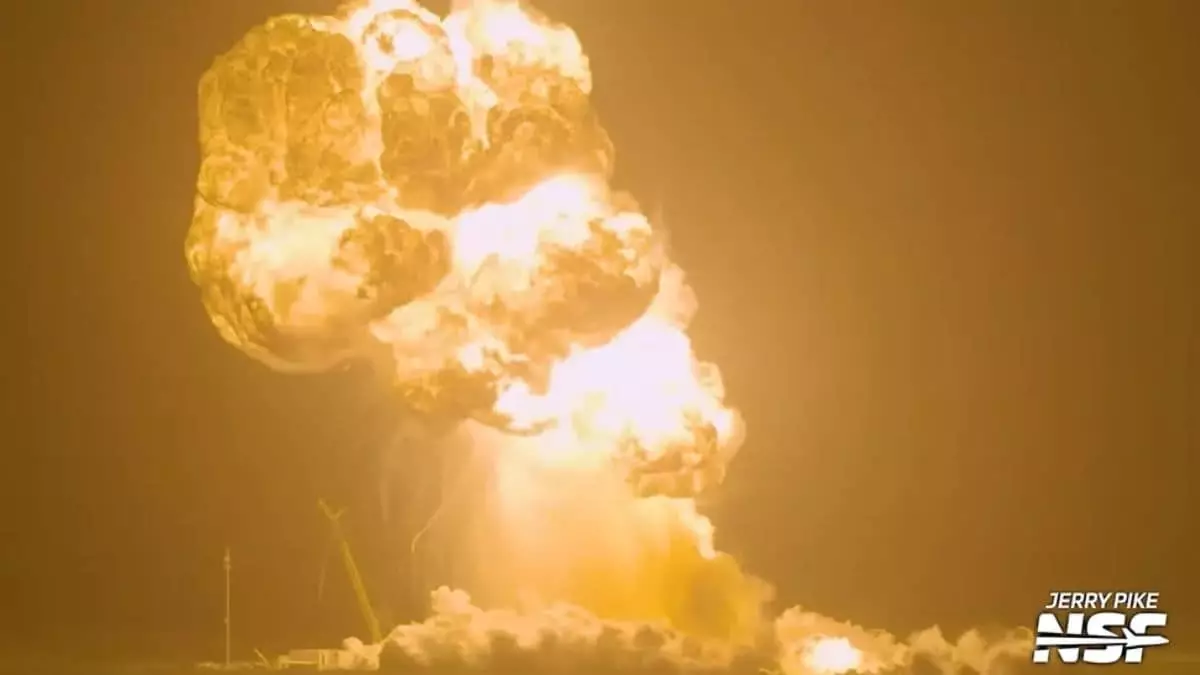Late Wednesday night, a cacophony of destruction erupted at SpaceX’s Starbase facility in Texas. The firm, celebrated for its audacious aspirations of interplanetary colonization, witnessed one of its Starship rockets succumb to a catastrophic explosion during what was touted as a routine ground test. At approximately 11:00 PM, the test devolved into chaos, launching a sizable fireball into the night sky. Thankfully, onlookers and personnel were safeguarded behind set security cordons, but the sight of destruction was nonetheless disconcerting.
This incident begs the question: how many more explosive failures must we witness before we recognize the limits of our current technological pursuits? SpaceX, with its penchant for “failing fast,” embraces a philosophy that can border on recklessness. This latest failure, attributed to an unspecified “sudden energetic event,” raises valid concerns about the precarious nature of rapid innovation in the field of aerospace engineering.
The Price of Innovation
The damage inflicted by this explosion was not just physical; it resonated profoundly within the public consciousness, rekindling fears about the safety protocols supposedly in place. Initial assessments pinpoint a failure in a Composite Overwrapped Pressure Vessel (COPV) within the rocket’s nosecone, a critical component that must withstand immense pressures. While SpaceX has assured stakeholders that there are “no commonalities” with the COPVs used in their previous Falcon rockets, such statements do little to erase concerns about outbreaking dangers in technologies perceived as cutting-edge.
Elon Musk attempts to downplay the destructiveness of the incident, relegating it to a mere “scratch” on the vast surface of SpaceX’s ambitions. Yet, can we afford to normalize calamity in the pursuit of excellence? The exploratory and adventurous spirit that fuels SpaceX’s mission is invigorating, yet it can also lead to a grim undercurrent of accepting failure as a Faustian bargain for progress. The treatment of setbacks should be sobering rather than cavalier.
Hollow Promises and Environmental Concerns
Moreover, as SpaceX accelerates its development cycle, it brushes aside mounting environmental concerns raised by advocacy groups weary of the company’s ambitions. The recent approval from the Federal Aviation Administration to potentially ramp up to 25 launches annually signals an alarming trend—prioritizing relentless expansion over responsible stewardship of our world. The implications are tremendous, as powerful forces collide; the pursuit of outer space becomes a distraction from the dire environmental crises we face on Earth.
While NASA’s continued support of the Starship initiative is laudable, one cannot overlook the ethical implications. Should humanity gamble with safety and environmental impact just to indulge in the dream of ventures beyond our atmosphere?
In the race to colonize Mars, SpaceX may find itself trapped in a paradox: the very technology designed to take us to new worlds could lead to catastrophic failures that shatter the dreams of a brave new frontier. Innovation must not only be bold but also responsible; understanding and acknowledging that the cosmos is not merely a playground but a challenge that will require humanity to respect both our planet and the celestial bodies we aim to explore.


Leave a Reply